Skroutz Asigurarea Cumpărăturilor
Τα τεθωρακισμένα στον ελληνικό στρατό (1920-1940)Codul: 25925893
- Autor: Κωνσταντίνος Βλάσσης
- Editor: Doureios Ippos
- Μορφή: Copertă tare
- Έτος έκδοσης: 2017
- Αριθμός σελίδων: 628
- Κωδικός ISBN-13: 9786188003149
- Διαστάσεις: 24×17
Κωνσταντίνος Βλάσσης
Produse similare


 Cele mai apreciate
Cele mai apreciate
Cărți de hobby și timp liber
Η Επανάσταση της Γλυκόζης, Ρυθμίζοντας το Ζάχαρό σου θα Αλλάξεις τη Ζωή σου
Ad de la SilverProductsAdăugat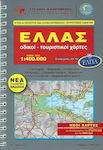
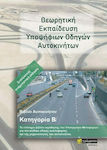
Cărți de hobby și timp liber
Θεωρητική Εκπαίδευση Υποψήφιων Οδηγών Αυτοκινήτων, Categoria B a cărții auto
Ad de la BooklibertyAdăugat
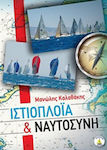

 Cele mai apreciate
Cele mai apreciateCărți de hobby și timp liber
Η δική μου ελληνική κουζίνα, Cele mai bune 260 de rețete grecești ale lui Akis Petretzikis
Ad de la BookstimeAdăugat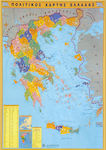
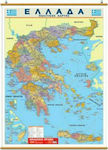
Toate magazinele
Prețurile sunt calculate pentru:România, Alte opțiuni de plată
- 101,64 Lei
- 101,64 Lei
- 96,00 Lei
Descriere
The book extensively examines the long process followed by the Greek Army until the eve of World War II in order to equip itself with battle tanks and partially acquire the element of mechanization, elements that were developed during World War I and were destined to dominate the future battlefield.
Immediately after the Asia Minor Campaign, Greek officials, among ambitious plans for the rearmament of the Army, also promoted the theoretical creation of the first tank units. In this context, the author examines, as much as possible from the existing sources, the references to the first contacts and experiences that the Greek Army had with armored vehicles and tanks in World War I and the campaign in Southern Russia, as well as the thoughts that may have been made during the Asia Minor Campaign, until the acquisition of the first armored trucks, in the role of public space surveillance. Chronologically, the general predictions and plans that were put on the table as part of a broader reorganization program are then presented, in order to finally decide on the supply of only 2 light battle tanks and 2 armored reconnaissance vehicles in 1930.
However, in order to fully understand the general framework and environment that had been formed and the situation in which the Armed Forces were in the first half of the 1930s, the insertion of an entire chapter was deemed necessary. This chapter describes in detail the general government policy that had been followed in previous years regarding the Armed Forces, so that the enormous needs in material, economic data, staff planning, and the equipment program with the priorities that were set for implementation could be understood.
The author conducted exhaustive research not only in the existing bibliography but also based the work mainly on Greek and foreign archival sources, resulting in the presentation of completely unpublished material, of great interest. Therefore, the study is characterized by the abundance of references, which are reflected in original tables (a total of 17) and a large number of appendices (a total of 45) that offer the reader comprehensive coverage of the subject. The result is a real bundle of unknown historical, economic, political, and military data, offered for the first time to the Greek reader.
In addition to the aforementioned originality of the work, which lies in the relatively extensive description of the economic-political-military framework developed during the period when the issue of acquiring armored vehicles is examined, special value can be attributed to the fact that for the first time modern Greek literature provides the opportunity for the reading public to receive a first comprehensive answer through extensive and combined presentation of elements and factors, to questions and issues such as the participation of armored vehicles in various movements of the 1920s and 1930s, the dilemma of mechanization or fortification and how it was posed at that time, the recommendations of Colonel Davakis on the issue of mechanization, the issue of Anglo-French credits secured in 1939, the corresponding development of the armored potential of the Balkan countries and the information that the Greek General Staff had, the organization of the related subject of anti-tank defense and the image that the Hellenic Army had formed based on information it received about the armored weapon from the reports it received about the actions of the German troops during the operations in Poland and France.
Specificații
- Tip
- Ghiduri de supraviețuire
- Limbă
- Greacă
- Format
- Copertă tare
- Număr de pagini
- 628
- Data de publicare
- 2017
- Dimensiuni
- 24x17 cm
Informații importante
Specificațiile sunt colectate de pe site-urile oficiale ale producătorilor. Te rugăm să verifici specificațiile înainte de a finaliza comanda. În cazul în care întâmpini probleme, raportează aici.
















